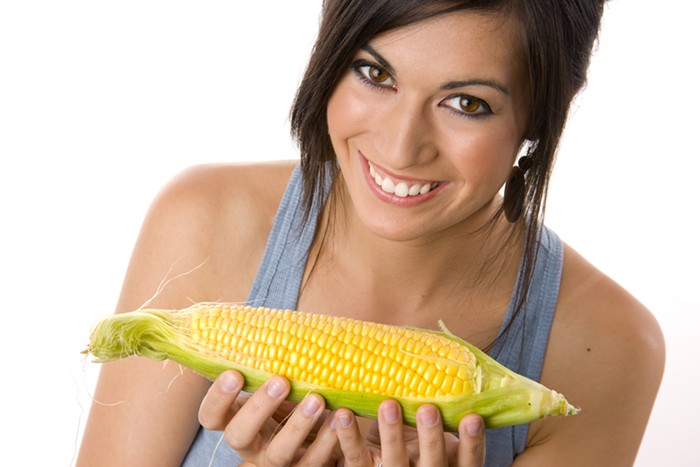SPATCHCOCK IT!
How to time a major feast—especially for an amateur or still-developing cook—is certainly one of the most difficult Thanksgiving skills to master. Happily, at our house, we stumbled on a dirty little secret last year that's helped dramatically ease the usual meal-planning mania. It's called spatchcocking.
It's also known as butterflying, and it's an elegant solution to that immutable obstacle of holiday cooking: the four or five hours needed to roast a large turkey, in the same oven you also need to properly cook the rest of your food. A spatchcocked turkey cooks in half the time, at a higher temperature, and the even application of heat virtually guarantees a perfectly cooked bird: crispy skin, dark inner thighs, and (crucially!) dripping and tender breast meat.
Put your brined, cleaned bird chest down and use your poultry shears to cut out its backbone. Open it up a bit, and flip it over. Then, with the heel of your palm, press on the bird's sternum until it cracks. Flatten the rest of it out, splaying its thighs and legs and wings rather luridly, and place it onto a rimmed cookie sheet. The rest should be familiar. Grease and spice the skin like you would normally and put it in a preheated oven—but set to 425 or 450 degrees. Baste with butter for a golden skin.
And, yes, spatchcocking definitely requires you to roast your stuffing separately. If that's a dealbreaker, consider that civilized people have already been doing that for years. DENIS C. THERIAULT
CHALK PEN NAMETAGS!
Nothing kills holiday cheer quicker than realizing you've been slamming slobbery Uncle Jim's pinot for the last 15 minutes. This year, instead of identifying your wine with childish beaded Monopoly pieces, pick up a liquid chalk pen—available in a variety of colors at art supply stores—and let everyone write their names on their glasses. If you purchase a color other than white, you can also use it to label appetizer plates for picky eaters ("gluten free," "vegetarian"). We find the "chalk marker" from Bistro—advertised for use on chalkboards and lightboards—works great. The chalk ink will come off with a damp rag, or in the dishwasher. DIRK VANDERHART
WONDRA: A WEIRD FLOUR!
If you're a good hippie foodie who follows the dictums of Michael Pollan, Wondra looks like the enemy. It comes in a suspicious-looking can, after all, which the modern, progressive cook has been told to strictly avoid. Packaged food! From the inner shelves of the grocery? Shudder. However, Wondra is not really that scary (depending on how strict you are about white grain-based substances). It's just flour that has been "pre-gelatinized"—another scary word that basically means "steamed." And the stuff is indispensable when it comes to thick, un-chunky gravies and sundry roux, which—if you don't make them all the time—can be a white-knuckle experience when the holiday pressure is on. You'd basically have to actively try to make it lump (if it's even possible). It's also a great tool for dusting and sautéing meats, baking, and about a million other things, and if you don't believe me? JULIA CHILD recommended it for crêpes, and JACQUES PÉPIN is a fan. MARJORIE SKINNER
OLIVES: HEAR ME OUT.
Along with house-made pickle plates and infusions, olives have become a standard snack item on better menus across the city. They're usually a petite medley of high-priced, heavily oiled subjects that are inevitably full of pits (with nowhere to dispose of the evidence politely), and bitter. I went along with it for years, letting myself believe that I had graduated to a better, more mature and sophisticated olive experience, food-mecca resident that I am. And then, one day, I went over to a friend's house, and she busted out a can—yes, a can—of pitted (!) black olives to snack on. The kind sliced on Round Table pizzas. The kind kids pop on and off their fingers. It was a revelation, and I vowed never to squander hard-earned cash on a fancy, joyless olive appetizer again. I couldn't remember the last time I'd had one, and was overcome with nostalgia. You see growing up, my mother—who is a very fine cook—served them every single year with Thanksgiving dinner. She knows what's up, and if you know when to spend and when to save, maybe you do too. MS
LET HUBER'S DO IT!
Okay, here's the situation: It's your turn to do Thanksgiving. You've lived gluttonously off the teat of friends and family for years, and now, seriously? It's your turn. So how do you feed a large group a solid, no-nonsense turkey meal that's guaranteed to satisfy? Go to the experts. Huber's Café (411 SW 3rd) has been serving golden, delicious turkey since 1891, when Frank Huber hired Chinese immigrant Jim Louie to man the kitchen. Establishing turkey as their signature dish, Huber's still nails their "Roast Young Tom Turkey Dinner" ($11.95 lunch, $16.95 dinner) every single time, and they have catering... so instead of risking the lives of your guests with salmonella, turn to the experts. Order a whole roasted turkey—which serves 50-80 (based on 2 oz portions), comes with dollar rolls and condiments, and is totally worth it at $160, because it's your turn... and Huber's does turkey right. WM. STEVEN HUMPHREY
ELEPHANTS DELI HAS MUCH STYLE!
Okay, here's another situation: It's your turn to do Thanksgiving, but you're lucky because you're only gonna have to feed a handful of people. Maybe you have a decent turkey lined up, and you just need to supplement the meal with sides. If that's the case, here's the place everyone always seems to forget: Elephants Deli (various locations). Best known as that place to buy a sandwich to sneak inside the Fox Tower theaters, they also offer tasty side dishes that will make your holiday guests think you've been slaving for days. Savory bread stuffing ($5 a pound), turkey gravy ($5 a pint), cranberry orange relish ($9.95 a pint), creamy mashed potatoes ($6.50 a pound), apricot roasted vegetables ($10.50 a pound)... and while you're being a hog, go ahead and order applewood smoked ham with pineapple bourbon sauce ($13.50 a pound)—for you to conveniently "forget" to serve, and nosh on after all your guests have left. WSH
CALL THAT STUFFING A PUDDING!
Savory bread pudding is easy, seems fancy, and can be doctored up to taste just like the holidays. It makes an awesome vegetarian main dish, or put bacon in it, I don't care, I'm not the boss of you. A recipe follows, but the beauty of bread pudding is that it can absorb whatever flavors you want to throw at it—mushrooms and thyme would be good, sausage and apples, whatever. Just make sure to use stale or toasted bread, so it doesn't get too mushy. ALISON HALLETT
Tastes-Like-Thanksgiving Bread Pudding
1 smallish butternut squash, peeled and chopped into 1-inch pieces (6 cups, give or take)
½ pound fancy white bread, torn into bite-sized pieces (about 6 cups), preferably day-old
2 tablespoons butter, plus more to grease your pan
1 tablespoon olive oil
2 white onions, diced
12ish sage leafs, chopped (if you steal it from your neighbor's yard, wear your "sous chef" hat)
1 teaspoon dry thyme
2 cups half & half or milk
5 eggs
½ cup white wine
1 cup grated sharp cheddar, or more if you really like cheese (gruyère would be good too, or white cheddar; this isn't rocket surgery)
½ or ¾ cup roasted chestnuts, peeled and chopped
1 bunch lacinato kale, stems removed, leaves cut into ribbons (this is totally optional but provides the pleasant illusion that this dish is in any way good for you. You can use 2 bunches of kale if you really want to play this up.)
salt & pepper
Preheat oven to 400 degrees, and grease 13"x9" baking pan.
Toss cubed squash with olive oil, then spread on a cookie sheet, sprinkle with salt and pepper, and roast until tender, about 20 minutes.
If you're using fresh bread, toss it in the oven on a baking sheet for a few minutes to toast it up a bit—keep an eye on it and toss it frequently. Don't burn it! You just want it to get kinda crunchy. (You can do this in advance, at lower heat, if you've got time.)
While the squash is cooking, melt butter in a frying pan over medium heat. Add onion and sauté, stirring frequently, until the onion is soft, then add kale and cook, stirring, until just tender.
In a large bowl, whisk together eggs, milk, wine, sage, thyme, and ½ teaspoon each of salt and pepper. Add the bread and let soak for a few minutes if you've got the time, then toss in the squash mixture and cheese, and pack into your baking dish.
Bake at 375 degrees for about an hour, until the custard has set. About 10 minutes before it's done, sprinkle some chopped chestnuts on top, for extra holiday fanciness.













